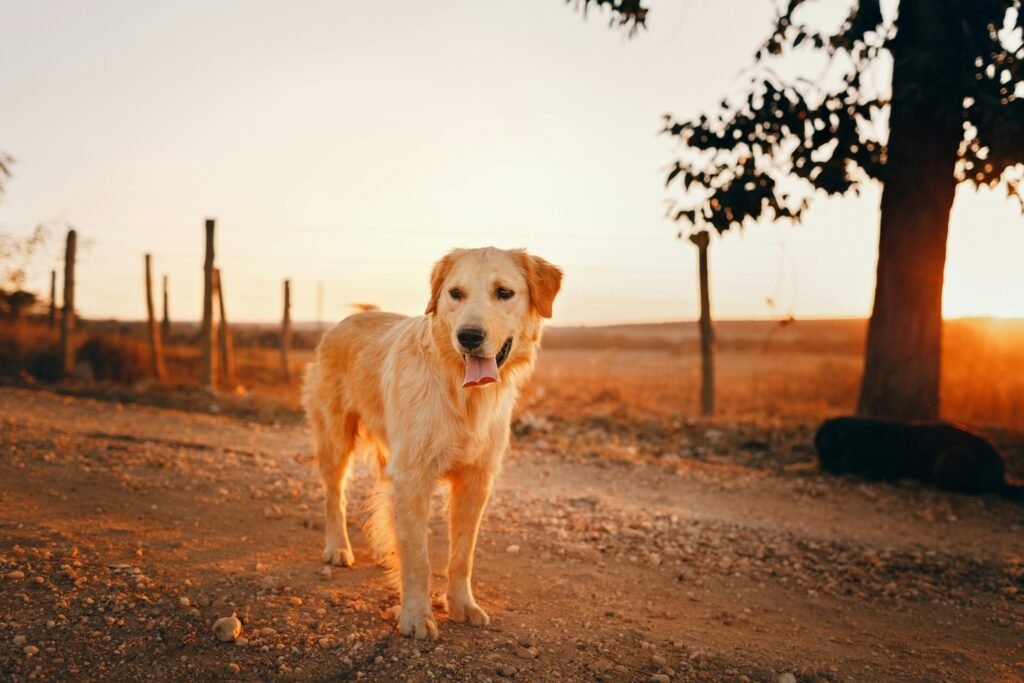Understanding when and how your Golden Retriever goes into heat is essential for any responsible dog owner. It not only helps in providing proper care but also in making informed decisions regarding breeding and health management. So, let’s dive into everything you need to know about your furry friend’s heat cycle!
Understanding the Heat Cycle
The heat cycle, also known as the estrous cycle, is a natural reproductive cycle in female dogs. This cycle consists of several stages that prepare the dog for potential pregnancy. It is crucial for owners to recognize the phases and signs to ensure their pets receive the best care.
Age of Onset for Golden Retrievers

Golden Retrievers typically experience their first heat between six months to one year of age, although some might start as late as 18 months. Various factors, including genetics, overall health, and environmental influences, can affect the timing of the first heat.
Signs Your Golden Retriever is in Heat
Recognizing the signs of heat in your Golden Retriever can help you manage her needs effectively. Common signs include:
Physical Signs:
- Swollen vulva
- Bloody or straw-colored discharge
- Increased urination
Behavioral Changes:
- Restlessness
- Increased affection or clinginess
- Attracting male dogs
Phases of the Heat Cycle
Understanding the phases of the heat cycle can help you predict and manage your dog’s behavior and health.
Proestrus:
- Duration: 7-10 days
- Symptoms: Swelling of the vulva, bloody discharge, increased attention from males, but she will not be receptive.
Estrus:
- Duration: 5-14 days
- Symptoms: Lighter discharge, swollen vulva, and she becomes receptive to males.
Diestrus:
- Duration: 60-90 days
- Symptoms: Reduced vulvar swelling, cessation of discharge, and if pregnant, this stage continues until whelping.
Anestrus:
- Duration: 4-5 months
- Symptoms: This is a period of sexual and hormonal inactivity.
Frequency of Heat Cycles
Golden Retrievers typically go into heat every six months, but this can vary. Some dogs may have cycles that are a bit longer or shorter, and younger dogs might have irregular cycles at first.
Caring for Your Golden Retriever During Heat

Maintaining hygiene is critical when your dog is in heat. Regularly clean her bedding and any areas she frequents.
You might also consider doggie diapers to manage discharge and keep your home clean. It’s also important to ensure she has a comfortable and quiet space to relax, as she may feel more tired and less playful than usual.
Health Considerations
During the heat cycle, monitor your dog for any signs of discomfort or health issues. Common concerns include urinary tract infections and excessive bleeding. Regular vet check-ups can help in early detection and prevention of potential problems. Keep an eye out for signs of pyometra, a severe uterine infection that can occur in unspayed dogs.
Spaying and Its Impact
Spaying your Golden Retriever can prevent the heat cycle altogether. It’s generally recommended to spay before the first heat to reduce the risk of certain health issues like mammary tumors and uterine infections.
Spaying not only eliminates the risk of unwanted pregnancies but also has significant health benefits. However, consult with your vet about the best time to spay, as early spaying can also have some risks.
Behavioral Changes During Heat
Expect some behavioral changes when your dog is in heat. She may become more irritable or anxious and might seek extra attention from you. Providing a calm environment and extra love can help her through this time. Some dogs may also display nesting behavior or seem more protective of their toys and spaces.
Myths and Misconceptions
There are several myths surrounding the heat cycle. For instance, some believe that dogs need to have one litter before being spayed, which is not true.
Also, not all dogs will bleed heavily; the amount of discharge varies. Another common myth is that dogs in heat are always in pain; while they may be uncomfortable, pain is not a normal part of the cycle.
Managing a Male Dog in the House
If you have a male dog, keeping him separated from your female during her heat cycle is crucial to prevent unwanted pregnancies. Use barriers and ensure they have separate spaces to minimize stress and potential accidents.
Male dogs can become very persistent and stressed during this time, so it might be a good idea to arrange for the male to stay with a friend or in a kennel if possible.
What to Do If You Don’t Plan to Breed

If breeding is not in your plans, spaying is the best option. However, if you choose not to spay, be prepared for the regular management of the heat cycle, including the use of doggie diapers and constant supervision to prevent accidental breeding.
Non-spayed dogs require vigilant care to prevent unwanted litters and manage the regular discomfort of their heat cycles.
Signs of Complications
While most dogs experience normal heat cycles, be vigilant for signs of complications such as prolonged bleeding, severe lethargy, or unusual swelling.
These can indicate health issues that require veterinary attention. Always consult your vet if you notice any unusual symptoms or behaviors in your dog during her heat cycle.
FAQs: Golden Retriever
How long does a heat cycle last?
A heat cycle typically lasts about 2-4 weeks, with each phase varying in length.
Can Golden Retrievers have silent heats?
Yes, some Golden Retrievers can have silent heats where signs are minimal and easy to miss.
What should I do if my dog has a prolonged heat?
If your dog’s heat lasts longer than 4 weeks or she shows signs of distress, consult your vet.
Is it normal for my dog to bleed heavily?
While some bleeding is normal, excessive bleeding could indicate a problem. It’s best to seek veterinary advice.
How can I prevent my dog from getting pregnant?
Spaying is the most effective way to prevent pregnancy. If not spayed, keep her away from male dogs during her heat cycle.
Conclusion
Understanding the heat cycle of your Golden Retriever is key to ensuring her health and well-being. From recognizing the signs to managing her care, being informed allows you to provide the best possible life for your furry friend. The more you know about your dog’s reproductive health, the better you can ensure her comfort and health throughout her life.

